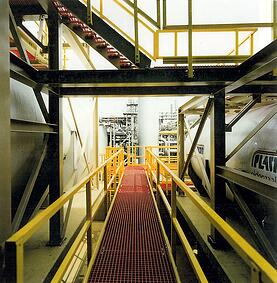In the oil and gas industry, slips and falls can cause serious injuries that quickly add up. In...
Top Risk in the Oil and Gas Industry
In the oil and gas industry, slips and falls can cause serious injuries that quickly add up. In fact, falls accounted for 28% of serious injury claims from 2008-2012 (Statistics for Oil & Gas Industry, 2014). As the industry continues to grow, so will this problem.
Top 5 Injuries in the Oil and Gas Industry
- Struck by
- “Impacting a part of the body against something or hit by a moving or flying objects, or by noise (noise impacts the ear drum).”
- Overexertion
- Injuries from “Musculoskeletal Injuries of Upper Body (Neck, back and arms).”
- Fall from elevation
- “Falls from ladders, roofs or other elevated surfaces.”
- Fall from same level
- “Slips, trips and falls on flat surfaces.”
- Caught in
- “A part of the body is squeezed, pinched or crushed in machinery.”
Source:Statistics for Oil & Gas Industry, 2014 & Injury Fact Sheets - Seven Common Injuries
The ongoing cost of injuries
Injuries in the workplace carry a very hefty price tag. Lost wages, medical bills, loss in production, cost of new hires, cost of training a new hire, and workers’ compensation claims are all ways workplace injuries can add up. In addition, unsafe facilities dramatically decrease retention rates.
So, how do you cut these costs? The best way is to eliminate them by having a safe facility. Slip resistant surfaces and guardrails significantly reduce the risk of falls. The problem with many slip resistant surfaces is the longevity of the slip resistance. Most products perform as promised when first installed; however, over time, the surface wears, slips, or peals off and becomes smoother. This is a typical problem across many industries, but it can be avoided through the use of nontraditional materials.
Safety Solutions

In fact, the slip resistant features of FRP grating and plate are not the only way FRP can prevent slips in falls in the oil and gas industry. Products such as FRP handrail and guardrail will prevent falls without the risk of rusting and corroding as with typical metal handrail and guardrail. FRP products also require very low maintenance which even further contributes to the increased safety in these products over traditional products.
By addressing the source of the slips and falls, you will be able to save your company a great deal of money.
Works Cited
Statistics for Oil & Gas Industry. (2014). Retrieved May 2014, 8, from Work Safe BC: OilandGasMarketOverview
Injury Fact Sheets - Seven Common Injuries. (n.d.). Retrieved May 13, 2014, from Washington State Department of Labor & Industries: http://www.lni.wa.gov/Safety/Topics/AtoZ/InjuryFS/default.asp?utm_source=Twitter
Topics: Safety


